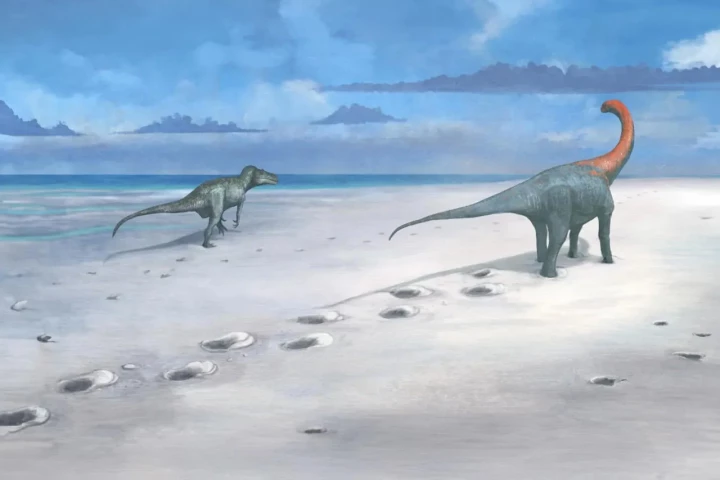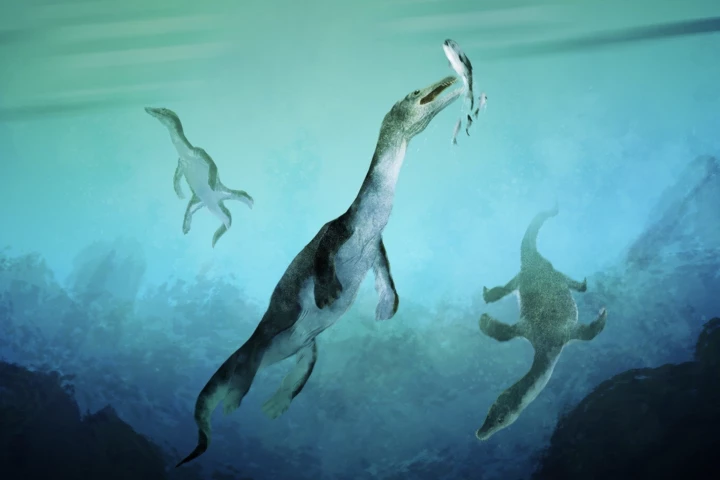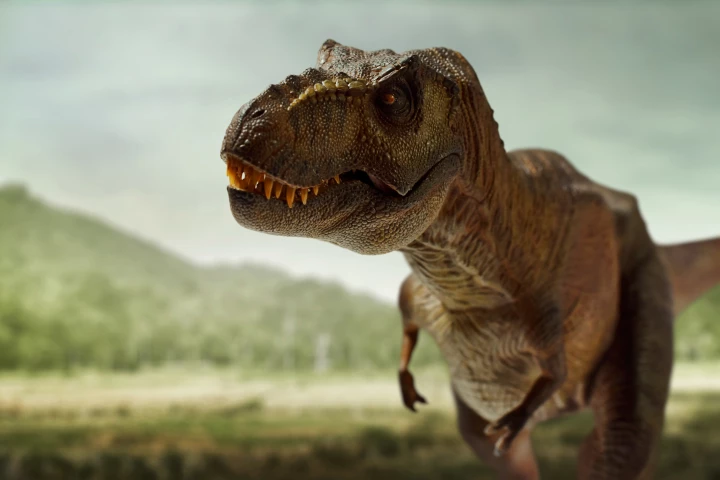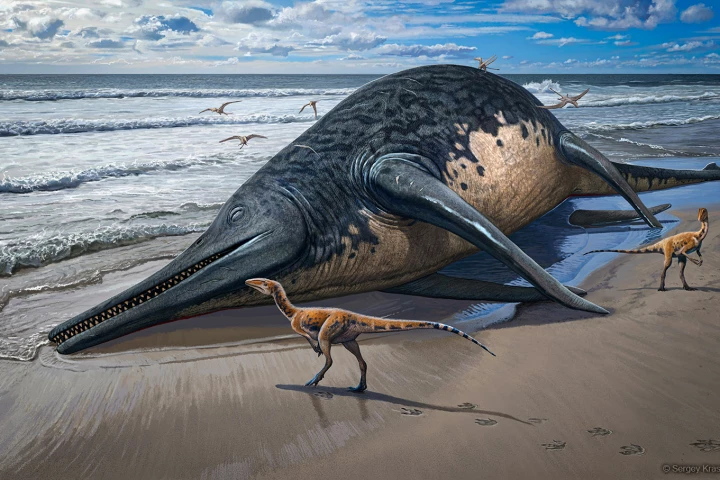Dinosaurs
-
If you, like us, were under the impression that two-legged dinosaurs were pacy beasts that could zip across the ground at around 40 mph, researchers have some bad news. A new study suggests they were much, much slower than previously thought.
-
For the first time, scientists have pieced together the diverse diet of a sauropod species, using advanced technology to assess the fossilized stomach contents that make up the dinosaur's last meal, which took place around 95 million years ago.
-
A quarry in South East England has yielded a fascinating paleontological discovery: long tracks with a total of 200 footprints left by enormous dinosaurs that roamed the earth during the Middle Jurassic Period, some 166 million years ago.
-
Scientists have charted how dinosaurs rose to prominence using a pretty unconventional method. They studied, in dirty detail, hundreds of samples of fossilized poop and vomit.
-
As if Komodo dragons didn't seem ferocious enough already, scientists have now discovered that the reptiles tear through flesh using a coating of iron on their teeth. It is now believed that dinosaurs such as T. rex may have been similarly endowed.
-
How do we separate the movie myths of Tyrannosaurus rex from the actual animal? The Victoria the T-rex exhibition sets the record straight with recent discoveries about what T-rex looked and sounded like, how it sensed the world, and how it hunted.
-
A never-before-seen species of horned, herbivorous dinosaur, a predecessor of the Triceratops, has been unveiled at the Natural History Museum of Utah. And its showy, distinctive headgear has earned it a name reminiscent of a god.
-
A single vertebra dug out of a rock in a stream below a New Zealand mountain in 1978 has been found to have belonged to the oldest sea reptile in southern waters, where no record of these huge beasts had existed. It dates back 246 million years.
-
While we don't like to talk ill of the dead, new analysis has called into question the intelligence of the king of the dinosaurs. It upends last year's findings that likened the cognitive skills of the Tyrannosaurus rex to that of a primate.
-
The six-foot-tall raptors in the Jurassic Park movies were terrifying enough, but now scientists have described a giant new raptor species whose legs alone were that tall.
-
A newly described species of marine reptile could be the largest to ever swim the world’s oceans. The “giant fish lizard” lived more than 200 million years ago, and may give the blue whale a run for its money, size-wise.
-
Scientists have long puzzled over why some dinosaurs had feathers and wings long before they evolved the ability of flight. Experiments with a robot dinosaur may now have revealed the answer – they used them for hunting.
Load More











